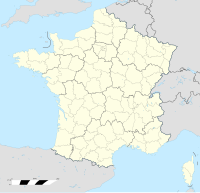Rearguard Affair of Étreux
| Rearguard Affair of Étreux | |||||||
|---|---|---|---|---|---|---|---|
| Part of the Great Retreat on the Western Front of World War I | |||||||
| |||||||
| Belligerents | |||||||
|
|
| ||||||
| Commanders and leaders | |||||||
|
|
| ||||||
| Strength | |||||||
| around 800 with two field guns | 4,000–5,000 | ||||||
| Casualties and losses | |||||||
| around 600 killed and wounded, 240 men and 4 officers (POW) | as many as 1,500[1] | ||||||
The Rearguard Affair of Étreux was fought at Étreux by the British Expeditionary Force during the Great Retreat on the Western Front in 1914.
Background[edit]
The German 2nd Army commander General Karl von Bülow had ordered a rapid pursuit after the battles of 21–24 August against the French Fifth Army and the British Expeditionary Force (BEF). The 1st and 2nd Armies were sent to the south-west to gain the left flank of the Allied line. After encountering "especially obstinate" resistance at Marbaix and Le Grand-Fayt, the German Imperial Army's X (Reserve) Corps had been ordered to continue its advance to the south-west.[2] The 2nd Royal Munster Fusiliers had been ordered to hold its ground at all costs, in their first action in France.
Battle[edit]
Less than a battalion strength, just 3 companies of the 2nd Battalion of "The Munsters" supported by a couple of field guns halted the advance of the German Army for fourteen hours in the area of Oisny and Étreux during the retreat from Mons on 27 August.[1]
Under continual pressure from German attacks the Munsters fell back to an orchard near the village of Étreux. As night fell on the evening of the 27 August, they found themselves surrounded by the Germans. Having exhausted their ammunition they surrendered.[1] In their action at Ètreux only four officers and 240 other ranks of the 2nd Munsters survived but the battalion delayed German pursuit of the British I Corps, gaining time for the British Expeditionary Force to escape.[3] The 2nd Munsters were outnumbered at odds of over 6:1 and when finally defeated, the survivors were congratulated on their bravery by the German soldiers they had fought. The German X (Reserve) Corps continued its advance towards Wassigny and Étreux on 27 August, where its constituent 19th (Reserve) Division reported that it had "scattered a British battalion".[4]
Footnotes[edit]
- ^ a b c RMFA 2012.
- ^ Humphries & Maker 2013, p. 253.
- ^ Bowman 2003, p. 49.
- ^ Humphries & Maker 2013, p. 269.
References[edit]
- Books
- Bowman, T. (2003). Irish Regiments in the Great War: Regular Regiments at War. Manchester: Manchester University Press. ISBN 0-7190-6285-3.
- Humphries, M. O.; Maker, J. (2013). Der Weltkrieg: 1914 The Battle of the Frontiers and Pursuit to the Marne. Germany's Western Front: Translations from the German Official History of the Great War. Vol. I. Part 1. Waterloo, Canada: Wilfrid Laurier University Press. ISBN 978-1-55458-373-7.
- Websites
- "The Étreux Rearguard Action, 27 August 1914". Royal Muster Fusiliers Association Website. 2012. Retrieved 8 March 2014.
Further reading[edit]
- books
- Jervis, H. S. (1922). The 2nd Munsters in France. Aldershot: Gale and Polden. OCLC 776753712.
- Johnstone, T. (1992). Orange, Green and Khaki: The Story of Irish Regiments in the Great War, 1914–18. Dublin: Gill and Macmillan. ISBN 0-71711-994-7.
- McCance, S. (1927). The History of the Royal Munster Fusiliers: From 1861 to 1922. Vol. II. Aldershot: Gale and Polden. OCLC 317805052.
- Theses
- Staunton, M. (1986). The Royal Munster Fusiliers in the Great War 1914–19 (MA). Dublin: University College Dublin. OCLC 605266245. Retrieved 19 December 2014.

